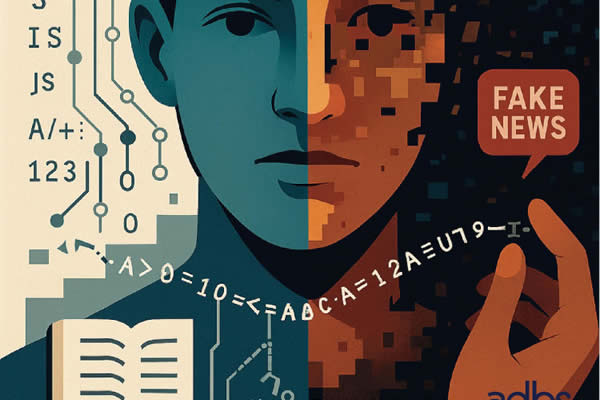PhD thesis abstract
The phenomenon of news automation, characterized by the process of transformation of structured data into texts in natural language or any other form of visual representation, asks the question about how it is integrated within newsrooms. If it can be considered as a finished product that will be delivered to audiences without journalistic mediation, this thesis is interested in its aspect related to the support of journalistic practices. Often associated with the metaphor of the « robot journalist, » news automation encourages dual representations that reflect its challenges : either a threat against employment and professional identity or an opportunity through an enchanted vision of the reinvention of journalism. This thesis explores how journalists tackle this new formof relationship as an artefact, as a tool, that is supposed to free them from repetitive and time-consuming tasks or to provide them an additional source of information.
The aims of this research project are, therefore, to understand how it will shape new professional uses, to identify the causes of resistance that could lead to non-uses, and to contribute to a better understanding of a man-machine relationship developed under tension. Considering that one cannot make use of a given technology without representing it, how will the social representations and cultural practices of journalists contribute to shaping the uses (and the non-uses) of news automation software when it is considered as a journalistic tool ? This research question was examined according to two hypotheses : that of the impact of the robotmetaphor, and that of the adequacy of the material productions of the artefact with journalistic know-how and requirements. The analysis is based on conceptual and theoretical frameworks proposed by the SCOT model (Social Construction of Technology) and by the French school of the sociology of uses.
It is approached through an empirical study conducted within two newsrooms in French-speaking Belgium, which are radically different both in their professional culture and in their organizational structure. In these two experiences, we have followed the process of a socio-technical construction which involved journalists in the design process. Although this first formof use does not guarantee the end-use of the two automation artefacts, it does lay the groundwork for adoption. The reasons to explain the observed resistances are not necessarily related to the nature of the object. They are also to be found in a lack of interest, a form of technophobia, a lack of appetite for a data-driven approach, a questioning of the management, or the dual representation induced by the robot metaphor. The mechanism for structuring the use will, therefore, be developed through a complex process shaped by both endogenous factors linked to the organizational context and journalistic routines, and exogenous factors related to the broader frameworks of the technological imaginaries and the man-machine relationship.




